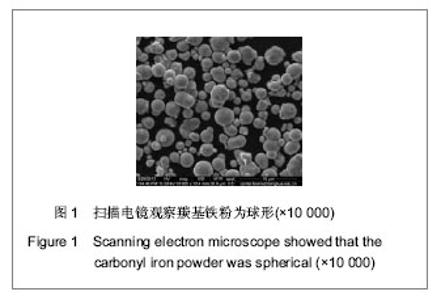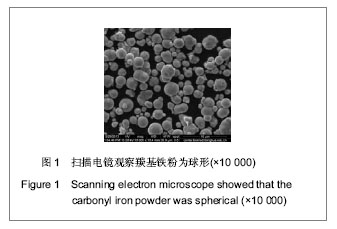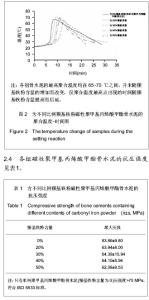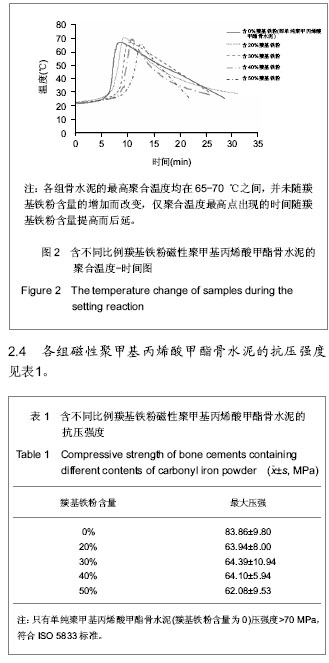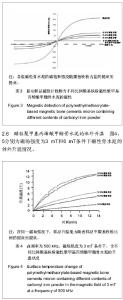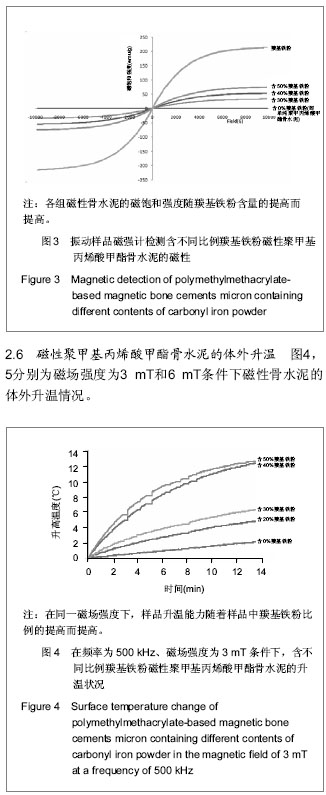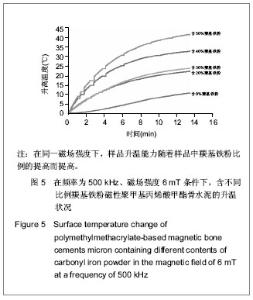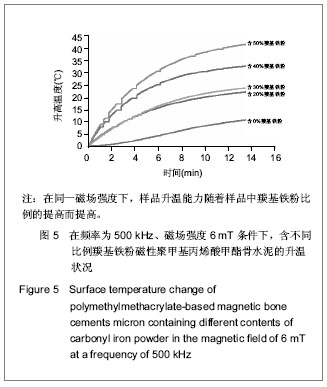| [1] Uchida A,Wakabayashi H,Okuyama N,et al.Metastatic bone disease: pathogenesis and new strategies for treatment. J Orthop Sci.2004;9:415-420.
[2] Coleman RE.Clinical features of metastatic bone disease and risk of skeletal morbidity.Clin Cancer Res.2006;12(20 Pt 2): 6243s-6249s.
[3] 杨迪生.四肢骨转移癌的治疗决策[J].现代实用医学,2008,20(1): 1-3,10.
[4] Drosos GI,Babourda E,Magnissalis EA,et al.Mechanical characterization of bone graft substitute ceramic cements. Injury.2012;43(3):266-271.
[5] 刘彦宁,刘淼,任鹏宇.磷酸钙骨水泥/顺铂复合体体外药物缓释及体内抑瘤和修复骨缺损的实验研究[J].中南大学学报:医学版, 2009,34(10):991-997.
[6] 刘彦宁,刘淼,任鹏宇.磷酸钙骨水泥/氨磷汀/顺铂复合体理化特性及其修复骨缺损的实验研究[J].南方医科大学学报,2010,30(1):88-91.
[7] 孙强,郑加法,刘德南.聚甲基丙烯酸甲酯骨水泥作为抗肿瘤药物缓释载体的实验研究[J].中华肿瘤防治杂志,2010, 17(11): 823-826.
[8] Kawashita M,Kawamura K,Li Z.PMMA-based bone cements containing magnetite particles for the hyperthermia of cancer. Acta Biomaterialia.2010;6:3187-3192.
[9] Gilchrist RK,Medal R,Shorey WD,et al.Selective inductive heating of lymph nodes.Ann Surg.1957;146(4):596-606.
[10] Moroz P,Jones SK,Gray BN.Magnetically mediated hyperthermia: current status and future directions.Int J Hyperthermia.2002;18(4):267-284.
[11] 吕永钢.刘静.基于肿瘤靶向热疗的磁性微/纳米颗粒的研究进展[J].微纳电子技术, 2004,41(9):22-28.
[12] 羰基铁粉的基本用途[J].中国粉体工业,2007,4(3):40-41.
[13] 江薇,赵凌云,盛军,等.动脉栓塞热疗用羰基铁粉磁热效应和细胞毒性研究[J].中国微创外科杂志,2009,9(6):487-490.
[14] Zhao LY,Jiang W,Jin YJ,et al.Application of Carbonyl Iron Powder as a Novel Mediator for Arterial Embolization Hyperthermia—Feasibility Investigation. IFMBE Proceedings. 2010;25(8):172-175.
[15] 布鲁奇,马尔绍.骨水泥型全髋关节置换术[M].李正维,赵继军,郑连杰,译.沈阳:辽宁科学技术出版社,2008.
[16] 王宇瀛,赵凌云,王晓文,等.磁感应热疗治疗肿瘤研究进展和临床试验[J].科技导报,2010,28(20):101-107.
[17] 唐正海,王晓文,张友仁,等.磁性复合骨水泥的体外细胞毒性[J].中国组织工程研究,2013,17(21):3937-3943.
[18] 杨建超,杨丰忠.载药磁性微囊用于脑胶质瘤可控热化疗的研究[J].医学研究杂志,2012,4(7):153-156.
[19] Miyazaki T,Anan S,Ishida E,et al. Carboxymethyldextran/magnetite hybrid microspheres designed for hyperthermia.J Mater Sci Mater Med.2013;24: 1125-1129.
[20] Hong RY,Feng B,Cai X,et al.Double-miniemulsion preparation of Fe3O4/poly(methyl methacrylate) magnetic latex. J Appl Polym Sci. 2009;112(1):89-98.
[21] Shinzato S,Nakamura T,Kokubo T,et al.Bioactive bone cement: effect of ?ller size on mechanical properties and osteoconductivity. J Biomed Mater Res 2001;56(3): 452-458.
[22] Tang ZH,Wang XW,Pan L,et al.WITHDRAWN: Preparation and characterization of PMMA-based bone cements containing magnetic nanoparticles for application in therapeutic hyperthermia of bone metastasis.Biomater Bioeng. 2013;647:155-159.
[23] Ito A, Kobayashi T. Intracellular hyperthermia using magnetic nanoparticles: a novel method for hyperthermia clinical applications.Thermal Med.2008;24:113-29.
[24] Robins HI,DOleire F,Grosen E,et al.Rationale and clinical status of 41.8 degrees C systemic hyperthermia tumor necrosis factor, and melphalan for neoplastic disease. Anticancer Res.1997;17(4B):2891-2894.
[25] van der Zee J.Heating the patient: a promising approach?Ann Oncol. 2002;13:1173-1184.
[26] Li Z,Kawamura K,Kawashita M,et al.In vitro assessment of poly(methylmethacrylate)-based bone cement containing magnetite nanoparticles for hyperthermia treatment of bone tumor. J Biomed Mater Res.2012;100A(10):2537-2861.
[27] 张修银,吴伟力,边益明,等.不同分散方法对纳米ZrO2/PMMA复合材料挠曲强度的影响[J].上海口腔医学,2009,18(3):313-316.
[28] Tong ZC,Liu M.Development of calcium phosphate cement and analysis. Xi’an Jiaotong Daxue Xuebao.2002;23(6): 605-608. |
